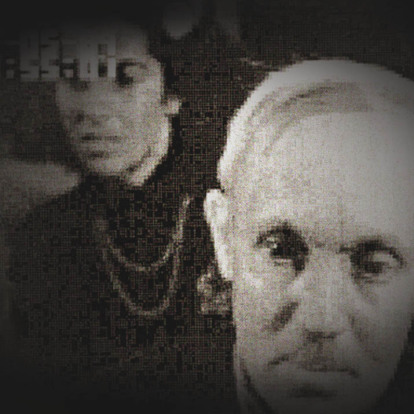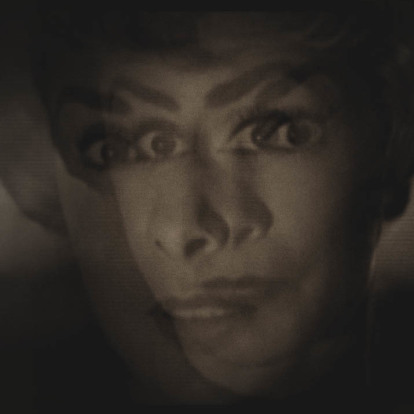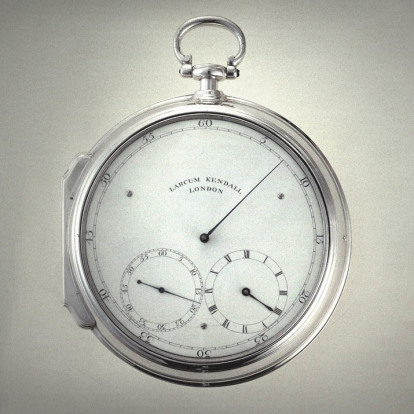The clocks of Austerlitz II – The shape of time
23 .03 .2015 - Graciela Speranza
Two clocks mark our first encounter with Jacques Austerlitz, the protagonist of W.G. Sebald’s final novel which was launched into the new millennium in 2001 like a sombre coda to the history of the 21st century and a profession of faith in the art of the 21st century. A narrator, who is hard to distinguish from Sebald himself, approaches Austerlitz in Antwerp Centraal Station, intrigued by one of the few travellers who isn’t staring apathetically into space in the Salle des pas perdus, but paying close attention to the station’s monumental architecture while making sketches, notes and taking photographs.
[Second of two parts] [Translated by Mark Waudby]

Frame “The Fuehrer gives a town to the Jews” / SEBALDIANA [PD]

24 Hour Psycho / Douglas Gordo, 1993 / CC BY
The sequence certainly engages in a dialogue with Douglas Gordon’s video installation 24 Hour Psycho, which he first exhibited in 1993 at the Kunstmuseum in Wolfsburg. Using electronic image tools, the running time of Hitchcock’s film is extended from 90 minutes to 24 hours in Gordon’s version, which recreates a Hollywood classic as a new experience that makes the time of the cinema into a deceitful double of the time of life. By slowing down the original speed of the film until it becomes an intermittent succession of stills that are projected for half a second, Gordon disrupts the illusion of real time in cinema, alters narrative continuity, frees viewers from the constraints of the genre and gives them the opportunity to look at the details that escape them at 24 frames per second and the dual time that is implicit in the cinema – the time of the story and the time of registration – that the speed and narrative conceal in the continuous movement forward. Austerlitz also sees what he hadn’t seen before in the Nazi documentary (“it did reveal”, he says, “previously hidden objects and people”) and he grows nearer to the time when the internees at Terezín “act” like extras in a fictional story, which in a previous future that is also implicit in the image (“every photograph is this catastrophe”, as Barthes said) foreshadows the tragedy of Auschwitz. Mediated by his character, Sebald provides a key to his own deceleration of the narrative tempo, the slow progression of his syntax, the “periscopic” telling of stories within the story inspired by Thomas Bernhard and his own editing strategies, the formal doubles of Austerlitz’s diatribe against machine-like time and Greenwich Mean Time.

Larcum Kendall Watch / Royal Museum Greenwich
“A delayed cinema gains a political dimension”, Laura Mulvey writes in Death 24x a Second: Stillness and the Moving Image, “potentially able to challenge patterns of time that are neatly ordered around the end of an era, its ‘before’ and its ‘after’. The delayed cinema gains further significance as outside events hasten the disappearance of the past and strengthen the political appropriation of time”. Like the “pensive spectator” Raymond Bellour sees emerge when confronted with a photo in cinema, the spectator of a slowed-down or frozen image notices the sudden confusion of times and distances himself. Sebald achieves a similar effect with a narrative form that is sensitive to the “eddies”, the “congestions” and “irruptions” Austerlitz perceives in the experience of topological time which escapes the metric units of clocks. Inspired by the experimental filmmakers and artists of their day, he also wants to summon a “pensive” reader who will register the temporary turbulences of the story within a story, will stop when confronted with the unexpected appearance of images that question it obliquely or disperse it, and look in vain for a final enlightenment or closure. Time not only slows down during Austerlitz’s long monologue, during the random chronology of encounters and the different times of the stories of others that become simultaneous in their own right, it also goes out of sync in the counterpoint of images that invite the reader to stop and wonder about relationships that are nearly always opaque. The photos in Austerlitz reverse the classic relationship of a book with images that, as a rule, illustrate it a posteriori, with a collection that inhabits the intimate scene of writing, precedes the story, inspires it, amplifies it or deflects it. Sebald said that the novel emerged from the photograph on the cover, but the toings and froings between reality and fiction even complicate this directionality in the editing process. Because even though the author makes it clear in the story that the narrator has inherited the photos of Austerlitz and presumably includes them in the story in his own way, the narrative device doesn’t pave the way for the deliberate confusion of the author with the narrator and character, or the paradox of the real photographs taken by an imaginary character. Enveloped by the fictional loop, the photos don’t lose their documentary value so what do they document? What do they really bear witness to with their fidelity to the “the necessarily real thing which has been placed before the lens, without which there would be no photograph”, that Barthes speaks of? The images of Terezín are certainly of the place that Austerlitz says he has visited and taken photos of, but who is the little boy dressed as a page in the photograph on the cover? Who does the canvas rucksack, which the novel leads us to believe is Austerlitz’s, really belong to? Who do the cut-out eyes juxtaposed with those of nocturnal birds belong to? There are questions that are even more disturbing: what untold stories do the other images conceal? Who is the woman from the Terezín ghetto with the white flower in her hair? Like Austerlitz, who moves the photos from his collection back and forth in an order depending on family resemblances, like Sebald who arranges them in fiction – reframes them, moves them or delays them –, the reader is exhorted, at every stage, to abandon the time of the story and his own and to interweave it with other times and spaces. The task is infinite because the story doesn’t end: Austerlitz keeps looking for his father when he takes his leave of the narrator at the metro station in Paris, in a scene that is subtlety symmetrical to that of their first encounter which is all the novel allows itself as a coda. The final pages contain some sombre photos. “one tends to go down a negative gradient of the book that one reads towards the end “, Sebald said, “Books have, almost by definition, an apocalyptic structure. It is as well, therefore, to put in weirs here and there to hold up the inevitable calamity.” If it is the flow of a life that runs through the ineffable course of time, fiction can also be the weir that slows it down, stops it to observe where it is going and what it contains, before it follows its vertiginous course to its inevitable end.
Graciela Speranza is an art critic, narrator and doctor of letters from the University of Buenos Aires, Argentina where teaches literature. Among other books she published: Primera persona. Conversations with fifteen Argentine narrators, Guillermo Kuitca. Obras 1982-1998, Razones intensas, Manuel Puig. Después del fin de la literatura, and the novel, Oficios ingleses. Collaborates with the cultural supplements of newspapers Page 12 and Clarín in Argentina, and El País (Babelia) in Spain. Her latest book Atlas portátil de América Latina was shortlisted for the 40th Anagram Essay Prize. She co-directs the magazine of letters and arts Otra parte.





